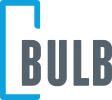Automation - the most essential tool for digital transformation
As companies search for ways to make businesses more efficient, productive, and effective, automation has risen to the top of the must-have investment list. According to Gartner, between the years 2020 and 2021, the global RPA sector saw a growth of around 19.5%. Though that might not seem like a huge number, it was an increase of 7.6% in the previous year.
Automation is changing the way countless businesses operate. The question is, how do you get started with a new Process Automation Strategy?
Step 1: Identify Opportunities
Implementing intelligent automation in any business can generate excellent opportunities and return on investment. However, like most disruptive digital tools, the best results come when you know what you want to accomplish. Think about the kind of problems you currently face in your day-to-day operations. For instance, if your main focus right now is on improving customer experience, you might start your process automation focus in the CX area.
Automating customer care activities might start by providing your service agents with an AI-enhanced contact center that automatically loads customer information whenever they answer a call. For service providers, it could include automatically sending an alert to customers that allows them to troubleshoot and diagnose the problem with their service before they’re passed through to an agent.
To determine where you should start, ask yourself what the biggest issue harming your customer service is right now. Is it a lack of self-service support for clients? Is it poor routing to service agents leading to more call transfers? Start with the problem and work backward to your automation solution. It may even help to get some feedback from the people in your team most likely to benefit from this automation. Customer care agents are more likely to have insights into the tools that will make them more efficient than the C-suite in some cases.
Step 2: Evaluate Workflows
Automation campaigns are capable of handling many different processes in each part of your company’s operation – including customer experience and customer service. However, you may not be able to automate everything at once. If you’re transitioning into a new stage of digital transformation, it’s often best to start with a few simple changes, then gradually implement more automation opportunities as you go.
If you decide that the biggest drain on your company’s time and resources is diagnostics and troubleshooting, start by analyzing your existing process. What do you currently do when a customer reaches out to you with a problem relating to your telco solution or insurance software?
Maybe you have to run a diagnostics test, have an engineer check through complex data to find the source of a problem, then send someone out to fix the issue. All of these steps make resolving a performance issue a slow, tedious process. However, automation could simplify things.
For instance, if the moment you get an alert that a service isn’t working properly, your automated system starts performing diagnostics and creating reports for an engineer, this reduces the complexity of the manual workflow. Your automation system could even use AI technology and IoT to automatically implement fixes and test solutions when the cause of a problem is found, making resolution much faster.
The more you examine your workflows, the more you can uncover new opportunities for automation and enhancement. For instance, if your customers have an IoT sensor installed with their technology, this could track performance and send alerts to your system when an impending problem is detected. With this strategy, you could examine the root cause of an issue, perform diagnostics, and implemented fixes, before your customer ever has to make a call.
The best thing about using LCAP solutions to design and manage your workflows is that if you want or need to redesign or recalibrate a process, you can do it quickly and easily with the drag-and-drop modeler, without having to be highly technical and spend many man-hours.
Step 3: Prepare for Digital Transformation
Once you’ve chosen the areas where automation is likely to make the biggest difference to your company, you can prepare to take the next step in your journey. The first part of this process involves making sure you have the right systems in place to support your automation strategies. You might need a decent amount of bandwidth to ensure that you’re getting alerts from IoT devices in real-time.
Providing automated customer service would also require investing in an intelligent platform that can scale and adapt to suit your company. One of the best things you can do to ensure you’re fully prepared for digital transformation with automation is to ensure you’re working with the right vendors. A company specializing in solutions for automation, artificial intelligence, and workflow enhancement can help you to determine whether you’ve really covered all the bases with your new strategy.
The right company will also be able to walk you through any additional things you might need to consider when implementing your automation efforts. For instance, if you do decide that you want to use chatbots and automated systems to enhance customer service, you’ll need to think about where the information collected in these conversations is going to be stored. How can you ensure your data management strategy is compliant with the needs of your industry?
If you’re going to be implementing new virtual assistants and tools to make your employees as efficient as possible, how can you ensure that your team adopts this new tech? Can you implement new training measures and onboarding efforts to support your team in making the most of the service?

Implementing your Automation Strategy
Once you’ve got all the right plans and technology in place, the next step is to start implementing your automation strategy. These days, the process is a lot simpler than it used to be. Low-code applications and access to complete portfolios of automation technology can make it easier to get the most out of your automation campaign in a matter of days (rather than months or weeks).
If it’s your first time implementing automated processes, you might find that it’s best to start slow, with plenty of guidance from the company responsible for powering your automation efforts. You’ll also need to make sure you have the right plan in place for how you’re going to measure the success of your efforts. For instance, can you track how your system:
- Complies with regulations and guidelines to help you stay ahead of the curve in your industry? How can you ensure you don’t fall behind the competition or fall victim to any issues with security and privacy?
- Enables employees to accomplish more meaningful work? How are you going to examine the improved efficiency and engagement levels of your team members? What will you be tracking to see whether you’re empowering your staff?
- Enhances the customer journey and experience? Can you track metrics like NPS and CSAT for a better insight into how customers feel about your new processes? Is it worth looking at metrics like the number of service requests you get each day, and whether problems with your technology seem to increase or decline?
You’ll also need to determine whether your automation strategy is cost-efficient. Is the money you’re saving or making through improved customer service and employee efficiency worth the amount you spend on your automation efforts?
Implementing your Process Automation Project
Getting involved with process automation for the first time can be a complicated experience, particularly if you haven’t embraced this environment before. However, as more companies move towards a future of digital transformation, the chances are that automation will become a more central part of how all organizations stay competitive.
Working with the right vendor to make your automation strategy as incredible as possible will reduce the issues you face on the path to digital transformation. Reach out to Bulb Technologies today for more information about launching your new automation campaign.
Contact us to discover more about Cempresso process automation
Our products and solutions are here to help you



